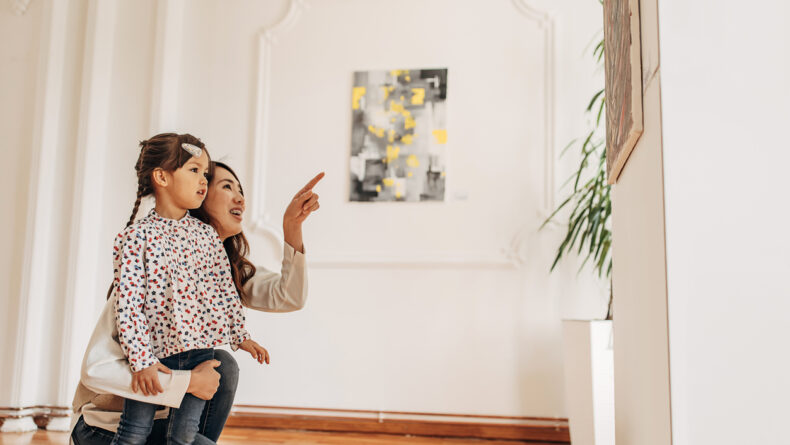Tokyo Art Scene: Form and Function
A Look Into The Principles of Design
We introduce three exhibitions that examines and reflects the design principle of “form follows function.”
“Form follows function” suggests that the shape or design of an object should serve a specific function. For instance, the temples of eyewear are bent slightly for it to sit securely in the user’s ear, and football stadiums have open roofs in order to shine sunlight on the grass. This idea also applies to many forms of art, such as furniture and fashion.
This week, Savvy will introduce three ongoing exhibitions that reflect and question this design principle.
“Material, or ”
 © Photo by Nadila
© Photo by NadilaThe creation of art and objects requires the transformation from material to a functional item. The ongoing exhibition at 21_21 Design Sight raises philosophical questions regarding raw materials and the ways in which we attach meaning to them in order to create art and everyday objects. Most of the physical things that surround us were once parts of nature; the receipt we get after ordering a cup of coffee used to be a tree, silk sheets were processed and harvested from silkworms. “Material, or ” explores the origins of mundane objects and highlights the process in which humans turn material into functional things.
 © Photo by Nadila
© Photo by NadilaThis exhibition is the result of a collaboration between director Satoshi Yoshiizumi, art anthropologist Toshiaki Ishikura, and material scientist Jun Kamei. Perspectives from these experts encourage visitors to reflect on global warming and the relationship between humans and nature.
 © Photo by Nadila
© Photo by Nadila- Date
- Now through Fri Nov. 5, 2023
- Time
- Daily except Tue. from 10 A.M. to 7 P.M.
- Location
- 21_21 DESIGN SIGHT Gallery 1 & 2, 9-7-6 Akasaka, Minato - Map
- Fee
- ¥1,400 (Adults), ¥800 (University students), ¥500 (High school students), Free (Junior high-school students and under)
- Info
- 5-minute walk from Roppongi station, 7-minute walk from Nogizaka station
“Finnish Glass Art: Sparkling and Colorful Modern Design”
 © Photo by Nadila
© Photo by NadilaThe rise of glass design in Finland was one of the leading symbols of the country’s national identity and modernism. Many of the glass art from the 20th century features emblems of Finland’s unique characteristics such as wildlife. Throughout the years, many designers emerged, introducing innovative ways and new techniques to glass art. Tokyo Metropolitan Teien Art Museum is currently exhibiting a retrospective on Finnish glass art featuring numerous artists from the early 1900s to contemporary designers of the 21st century.
 © Photo by Nadila
© Photo by NadilaThe Tokyo Metropolitan Teien Art Museum was once the Tokyo Metropolitan Teien Art Museum and until now, retains the grandeur of the mansion. The high ceilings and striking interior of the museum provides a sleek backdrop to the glass art. The summer sunlight that oozes from the large windows of the mansion adds a shimmering glimmer to the art, with each work reflecting the light differently depending on the shape and color. Displayed in the exhibition are works of glass plates, vases and sculptures.
 © Photo by Nadila
© Photo by Nadila- Date
- Now through Sun Sep. 3, 2023
- Time
- Daily except Mon. from 10 A.M. to 6 P.M.
- Location
- Tokyo Metropolitan Teien Art Museum, 5-21-9 Shirokanedai, Minato - Map
- Fee
- ¥1,400 (Adults), ¥1,120 (University students), ¥700 (High, junior-high school students, Senior over 65), Free (Elementary school students and under)
- Info
- 7-minute walk from Shirokanedai station, 10-minute walk from Meguro station
David Hockney
 © Photo by Nadila
© Photo by NadilaDavid Hockney is an English painter and multimedia artist most known for his colorful and playful paintings of people, urban apartments and flowers. Even at the age of 86, Hockney strives to explore different approaches to creating art. To celebrate the renowned artist, a David Hockney retrospective exhibition can be enjoyed currently in the Museum of Contemporary Art Tokyo.
 © Photo by Kazuo Fukunaga
© Photo by Kazuo FukunagaThe special exhibition includes works spanning over 60 years and includes paintings, portraits and sketches by the artist. Hockney is versatile in his use of mediums and visual language—not adhering to one approach to art, however, his work carries a style that is character to the English artist. Symbols and motifs emerge in many of his works, such as potted plants and urban apartments.
 © Photo by Kazuo Fukunaga
© Photo by Kazuo FukunagaIn the recent decade, Hockney turned to his iPad to create digital paintings. During the pandemic, he started exploring landscapes in his digital paintings. This exhibition showcases Hockney’s digital works as well. Visitors can watch his digital process through speed-paintings videos, as well as enjoy large displays of Hockney’s iPad paintings which span horizontally throughout the exhibition room.
- Date
- Now through Sun Nov. 5, 2023
- Time
- Daily except Tue. from 10 A.M. to 6 P.M. (until 9 P.M. on Summer Night Museum Days)
- Location
- Museum of Contemporary Art Tokyo, 4-1-1 Miyoshi, Koto - Map
- Fee
- ¥2,300 (Adults), ¥1,600 (University students and Senior over 65), ¥1,000 (High, junior-high school students), Free (Elementary school students and under)
- Info
- 9-minute walk from Kiyosumi-shirakawa station, 15-minute walk from Kiba station
After a trip to the exhibition, enjoy a stroll in the Midtown Garden by 21_21 Design Sight, the garden which comes with a ticket to the Tokyo Metropolitan Teien Museum, or the Kiba Park by the Museum of Contemporary Art Tokyo.
No unauthorized copying and replication of the images on this page.
















Leave a Reply